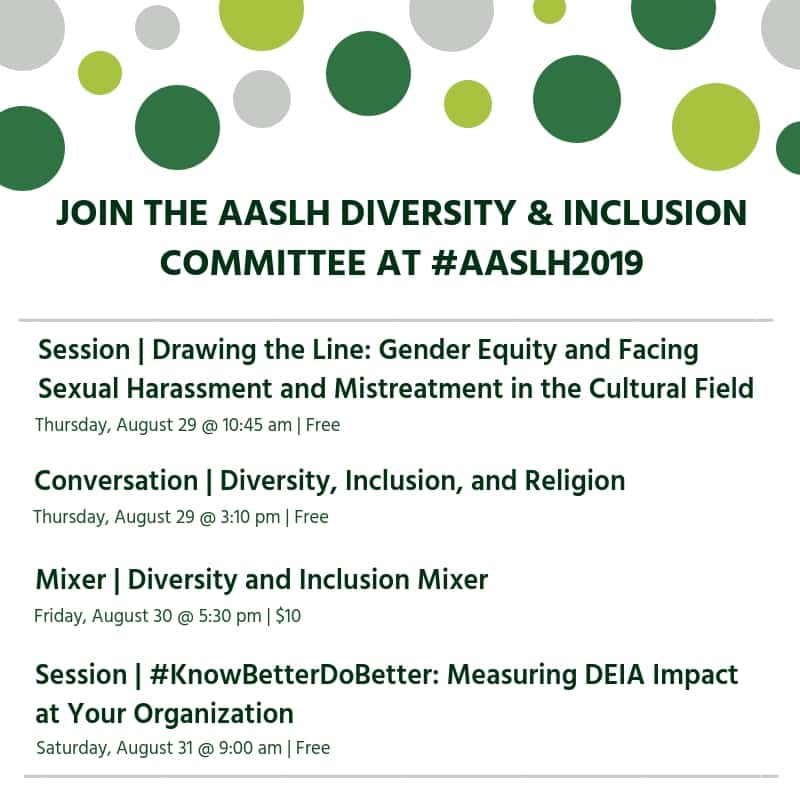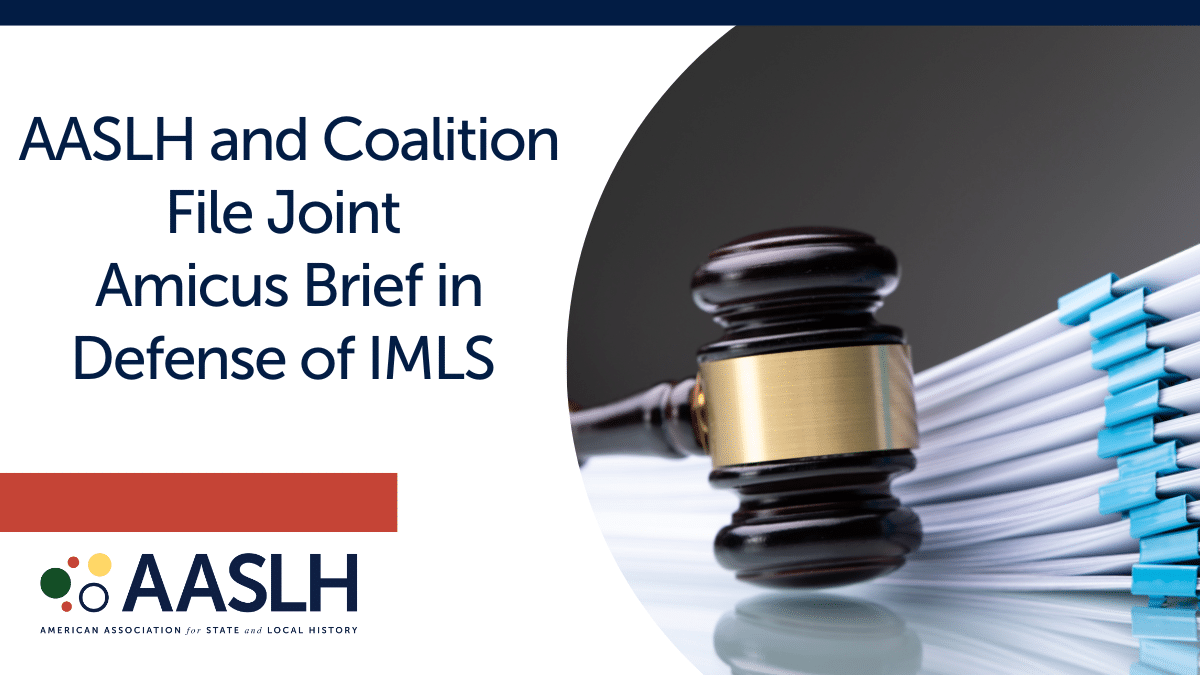
By Richard M. Josey Jr., AASLH Diversity and Inclusion Committee Vice-Chair and Member of Council
In September 2018, John Dichtl, President and CEO of AASLH wrote a blog entitled “Leading by Inclusion”. In this article, he states, “Inclusivity and relevance are core values at the heart of AASLH and central to conversations around the country in 2018.” In 2019, the AASLH Diversity and Inclusion Committee is preparing to facilitate a continued conversation between AASLH Council, staff, and membership.
Recently, I had the opportunity to facilitate a dialogue with the AASLH Council where we discussed the proposed work needed to establish a more inclusive organization of diverse individuals. It seems prudent to begin with understanding that culture work doesn’t simply change existing work cultures. Instead, true inclusion brings diverse voices and perspectives together to build new norms and cultures. It takes time, effort, and patience (among other things). We didn’t get to our current work cultures overnight, and we won’t build a new one overnight, either. The Diversity and Inclusion Committee seeks your help in defining and creating that new norm.
Oftentimes, there is difficulty in talking about diversity and inclusion. In many cases, this is due to the varying ways in how diversity is understood. When the Diversity and Inclusion Committee talks about diversity, we’re simply talking about difference. We realize that diversity is often used to identify for specific differences, like race, color, ethnicity, culture, gender, sexual orientation, gender identity and expression, political belief, religion, nationality, age, height, weight, ability, and marital and parental status: none of which are wrong. We’re simply suggesting that diversity at its core is the fact that we all are uniquely different.

Everyone has a role in creating an inclusive environment: every Council member, every AASLH staff member, and every AASLH member. Yet, the biggest challenge to creating an inclusive normal is establishing a standard of behavior where we can hold each other accountable. If I were to say something that offended you, what course of action might you take? Some that have known me might feel comfortable discussing the issue with me. Others who don’t, or feel uncomfortable, might not. Thus the cycle of offense continues.
We speak of inclusion as the identified and accepted behaviors we exhibit every time we come in contact with another human being and the way we choose to interact with that individual. As such, the Diversity and Inclusion Committee intends to engage the wider membership in order to identify a set of measurable and observable behaviors that become our standard for approaching inclusivity. Regardless of our own implicit and unconscious biases, our behavior will determine if an interaction is a positive or negative experience for both the communicator and the listener. These behaviors serve as a message to each other that, “Hey, you belong… you’re part of us”. Once we co-create shared standards of how we behave with each other, we will make a great step towards being the type of organization that leads by example.
Placing focus on our behavior allows us to identify, anticipate, and prepare for member’s needs, and to proactively respond to these before frustration and disengagement to set in. I recently read that “If it’s predictable, it’s preventable”.
 So, in the forthcoming weeks and months, we will be presenting you with ways to join the conversation. Your input and feedback is very important as we seek to identify the behaviors that we will hold each other accountable for. Through your involvement, we will be able to set the foundation for an organizational culture that you can truly feel a part of. More immediately, we welcome you to add any comments or thoughts below. Also, feel free to find me or other members of the D&I Committee at the 2019 Annual Meeting next week in Philadelphia. Our list of sessions and events is included here.
So, in the forthcoming weeks and months, we will be presenting you with ways to join the conversation. Your input and feedback is very important as we seek to identify the behaviors that we will hold each other accountable for. Through your involvement, we will be able to set the foundation for an organizational culture that you can truly feel a part of. More immediately, we welcome you to add any comments or thoughts below. Also, feel free to find me or other members of the D&I Committee at the 2019 Annual Meeting next week in Philadelphia. Our list of sessions and events is included here.
Remember, If it’s predictable, it’s preventable.



